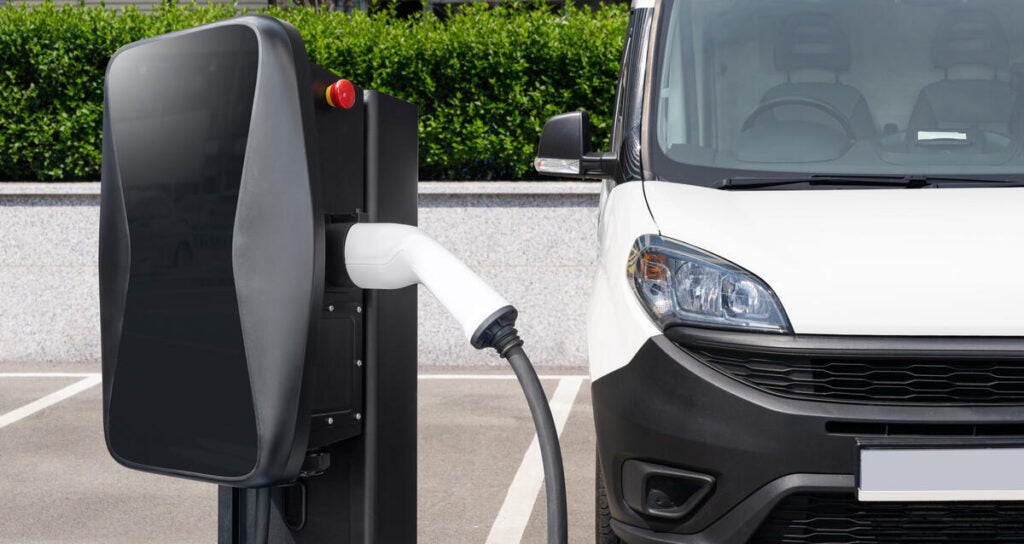A new study by Black & Veatch, commissioned by Environmental Defense Fund, provides further evidence that proactive grid investments don’t just help electric vehicles get on the road — they can save utility ratepayers money.
As EDF and many others have pointed out, traditional grid planning and investment processes were not designed to keep up with medium- and heavy-duty electric fleets, which can come online much quicker than comparably-sized traditional electric loads, like factories. This study illustrates some of the variables utilities and regulators should consider to prepare the grid in advance for electric trucks.
New study suggests preparing the grid now for electric trucks and buses can save ratepayers money Share on XStatus quo and change both come with risks
It’s easy to support preparatory grid investments in concept — after all, utilities have always built grid infrastructure in anticipation of future loads — but changing well-established processes can carry risk. Utility regulators justifiably worry that more anticipatory investments may result in stranded or underutilized assets, which can place upward pressure on rates (This is not a new issue, but the recent advent of transportation electrification loads, and commensurate increased need for anticipatory investments, has pushed it to the forefront of many regulators’ minds.) On the other hand, not investing ahead of loads also carries risk to ratepayers. For example, where a utility underestimates future loads, it’s likely to undertake inefficient or duplicative work, such as multiple incremental upgrades to the same asset, where a single larger project could have done the job much more cheaply.
This study set out, in part, to weigh these risks against each other. It seeks to address the questions:
- Does making grid investments in anticipation of MHDV loads end up costing less than reactive investments? What are the impacts to customer bills?
- What if forecasted MHDV loads don’t materialize? What is the cost of overestimating future loads, versus underestimating them?
Black & Veatch engaged these questions by modeling grid buildout scenarios for two utilities — CenterPoint Energy Houston and Consolidated Edison — using asset planning, capacity, and cost data provided by those utilities. The study modeled future system upgrades and associated costs under sequential (i.e., status quo) planning approaches, and proactive approaches that capture, and build in anticipation of, future EV loads over a long planning horizon. This modeling also included managed and unmanaged charging scenarios, as well as multiple EV adoption scenarios, to assess forecasting risk.
Key results include:
- Overall, building proactively tends to yield lower costs than building sequentially. The study suggests that proactive construction in anticipation of EV loads yields about $20M of savings, on present-value basis, compared to sequential construction for the assets modeled in Con Edison’s territory; and about $10-13M of savings for the assets modeled in CenterPoint’s territory. The cost-optimal mix of proactive versus sequential builds will vary based on utility- and location-specific factors.
- Overestimating future EV loads appears to carry limited risk. The EV load sensitivities modeled had little impact on the optimal mix of proactive versus sequential investments. An all-proactive approach continued to be cheaper overall even at the lowest EV penetration scenario modeled. Thus, overestimating EV loads appears to represent a much lower risk, from a total cost perspective, than the risk of failing to build in anticipation of potential future loads.
- Other new sources of load growth besides EVs, such as data centers and building electrification, are expected to amplify the above effects. Though the study did not model these other load sources, it suggests that as they are layered into utilities’ forecasts, they will tend to further tip utilities’ optimal investment approach toward proactive construction.
These results suggest that proactive construction will often be justified even without regard to other benefits that this study did not examine. For example, a proactive approach may help avoid future increases in utilities’ unit costs (i.e., building today is often cheaper than waiting to build tomorrow). Preparing the grid will also help EVs and electrified buildings come online more quickly, accelerating improvement of air quality and utility rate savings (several other studies have found that EVs tend to generate revenues in excess of their costs, which puts downward pressure on rates to the benefit of all ratepayers).
Next Steps for Utilities and Regulators
These results warrant both more analysis and more action. Deeper dives into each utility’s specific contexts will yield insights that this study could not. For example, due to data limitations, the study could only model portions of the utilities’ systems; trends seen at those levels were imputed across each utility’s asset base. The study focused on voltage upgrades as a proactive approach. Voltage upgrades may not be practicable in all circumstances, and the study did not model other forms of proactive construction. Utilities should consider conducting — and releasing for review — analysis that drives these concepts down to the granular system level.
That said, the study’s central findings are actionable today. This study provides evidence that the stranded-asset risk of overestimating EV loads, and the cost risk of underestimating EV loads, are not symmetrical. Much more research can (and should) be done to refine these findings further and to consider them in other utilities’ contexts. But in the meantime, to help reduce costs to ratepayers, regulators should direct utilities to 1) incorporate EV loads into their long-range planning forecasts; and 2) err on the side of investing proactively where forecasts are ambiguous.










